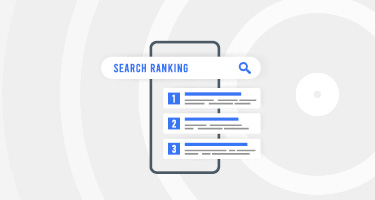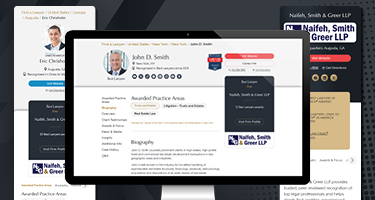Maintaining an active and engaging website is critical for law firms looking to attract clients and boost visibility online. A common challenge, however, is determining how often to post content to keep your audience engaged and your SEO strong.
Understanding the optimal content creation frequency is essential for sustaining a strategy that keeps your firm competitive in a rapidly evolving digital field.
In this post, we'll discuss how you can effectively manage your content creation schedule. This will help ensure you post the right amount of content at the right time to maximize client engagement and improve your website's SEO performance.
Why Content Creation Frequency Matters for Law Firms
How often you post content directly affects your digital marketing results. Search engines like Google prioritize fresh, relevant content, making it a key ranking factor. This means that by regularly updating your law firm’s blogs, service pages and practice area insights you can expect to see:
1. Higher SEO Rankings
Websites that frequently add fresh content are crawled (reviewed by search engines for updates) more often, improving their chances of ranking for relevant keywords.
2. Increased Client Trust
Clients expect updated, accurate information. A site that appears neglected can create doubt about your firm's activity and reliability.
3. Enhanced Visibility
Consistently updated content keeps your firm top-of-mind with both clients and search engines. In a competitive market, visibility is essential for attracting new clients.
To set the right content creation schedule, consider your firm’s size, available resources and marketing goals. Law firms that develop a structured posting schedule can balance quality and quantity, ensuring they stay relevant while providing value.
How Often to Post Content on Your Law Firm's Website
Deciding your content publishing frequency requires balance. Posting too little might cause you to lose visibility, while posting too much can overwhelm your audience if the content lacks depth. Here are starting points to guide your content posting schedule:
Blog Posts
For your law firm, blogs are a key part of content strategy. As a starting point, you can aim for the following:
- Large firms: one to two blog posts per week.
- Small to mid-sized firms: one to two blog posts per month.
It’s important to note that while one to two posts per month may be a good starting point, posting more frequently, such as once per week, will likely yield better results for even small firms. Businesses that post more frequently tend to see higher traffic and more leads.
However, the emphasis should always be on producing high-quality content. Your blog posts should address the specific needs of your clients, offer insights into legal trends and answer frequently asked questions. By doing so, you will not only engage potential clients but also establish your firm as an authoritative source of legal expertise.
Website Refreshes
Content refreshing is essential for keeping your core pages current and aligned with the latest legal information. Aim to refresh practice area pages, case results and other critical sections of your website every three to six months. This ensures your content remains relevant and enhances SEO rankings by providing clients with up-to-date legal information.
Practice Area Pages & FAQs
Key landing pages, like your practice area descriptions or FAQ sections, should also receive attention. Consider updating these sections twice a year or whenever significant legal changes occur. This approach ensures that your firm’s services are clearly outlined and aligned with current laws or client needs.
Creating a Sustainable Content Posting Timeline
Consistency is critical when building a content creation schedule, but sustainability is equally important. You want a process that you can stick to without overwhelming your team. Here's how you can achieve a realistic, effective timeline:
Plan Ahead
Build a quarterly content creation timeline that outlines blog topics, website updates and key legal developments that may require new content. Tools like content calendars can help you visualize and manage your schedule, ensuring you stay on track without last-minute rushes.
Focus on Quality Over Quantity
While regular updates are necessary, quality must always come first. Posting frequently but with subpar content can damage your firm's credibility. Focus on creating content that addresses your clients' needs, provides valuable insights and positions your firm as a trusted source.
By thinking about your audience's pain points and answering their most pressing questions, you can deliver valuable content that resonates. It's not just about filling space but about crafting content that solves problems, educates and builds trust.
Include a Content Refresh Strategy
Alongside your new content, ensure your calendar includes regular content audits. Updating older blog posts, optimizing SEO with new keywords and adding recent case studies will keep your content current and relevant. This approach ensures your website remains a valuable resource for clients and continues performing well in search results.
Measuring the Impact of Your Content Strategy
Once your content schedule is in place, it’s vital to measure the success of your strategy. Use tools like Google Analytics to track:
- Website traffic and search rankings: How often are visitors finding your site through organic search?
- Engagement rates: How long are visitors staying on your site and how often are they engaging with your content?
- Conversion rates: Are visitors reaching out for consultations or scheduling appointments after viewing your content?
By consistently analyzing these metrics, you can fine-tune your posting schedule to maximize engagement and ROI.
Adjusting Your Content Frequency Based on Data
The legal industry is constantly evolving and so should your content strategy. If engagement or traffic declines, consider adjusting your content creation frequency or updating older content more often.
Conversely, if your current schedule feels unsustainable, consider scaling back. Focus on fewer, high-quality pieces that still meet client needs and maintain your firm's credibility.
Final Thoughts on Content Creation Frequency
Finding the right schedule for updating your content is key to staying visible, building trust with clients and improving your SEO rankings.
By setting a plan that aligns with your firm’s size and resources, you’ll ensure your website stays fresh, informative and valuable to your audience.
Make it a habit to regularly review your posting schedule and adjust based on feedback and performance metrics. This will help your firm stay relevant and prepared to meet evolving client needs.
Ready to Attract the Right Audience and Strengthen Your Online Presence?
Explore The Best Lawyers Digital Marketing Platform and see how it can drive measurable results for your law firm. To see how your firm appears to potential clients, visit Best Lawyers to find a lawyer and explore how top practitioners showcase their expertise online.
































